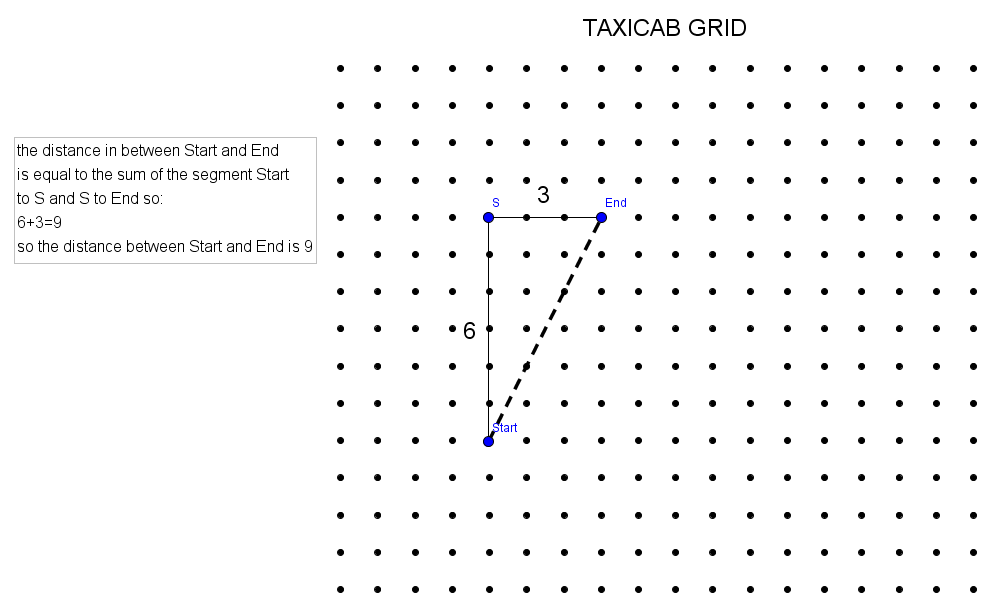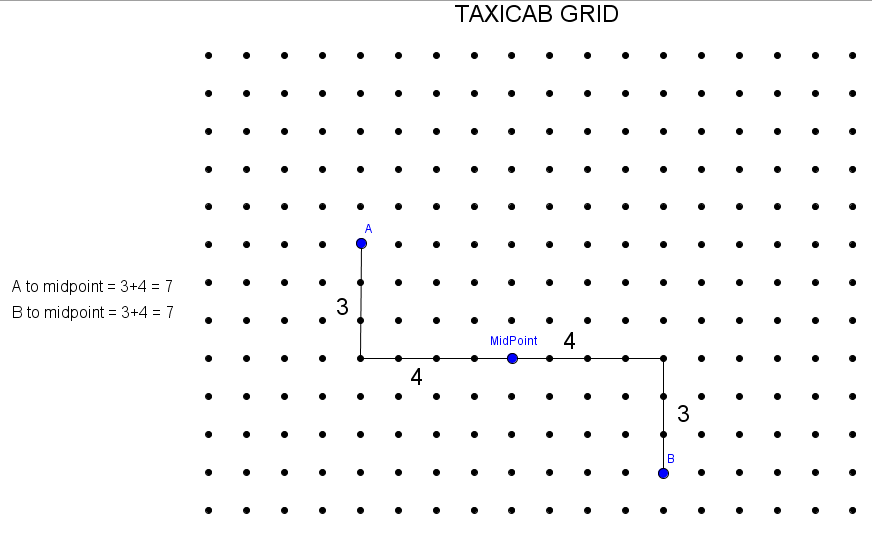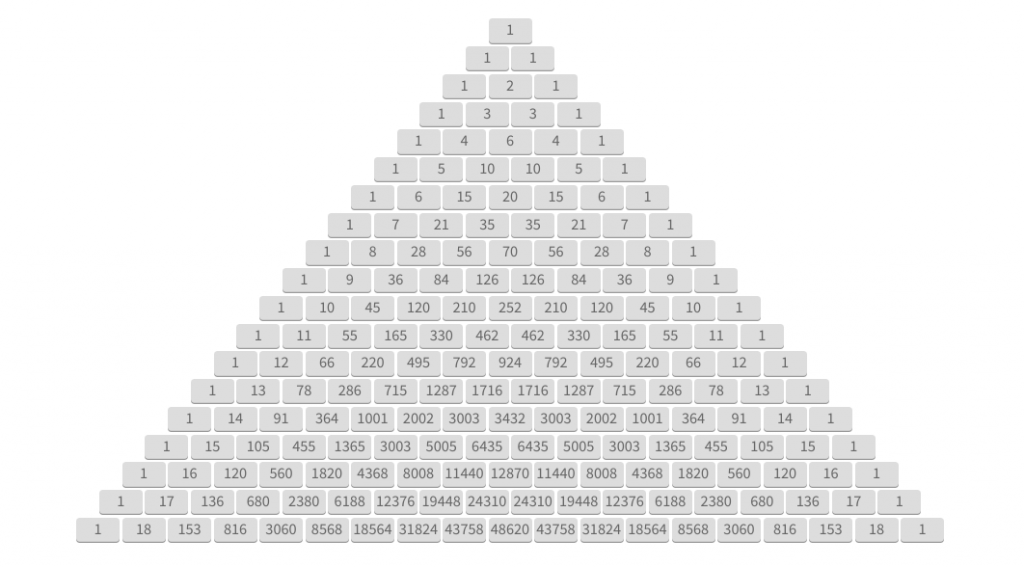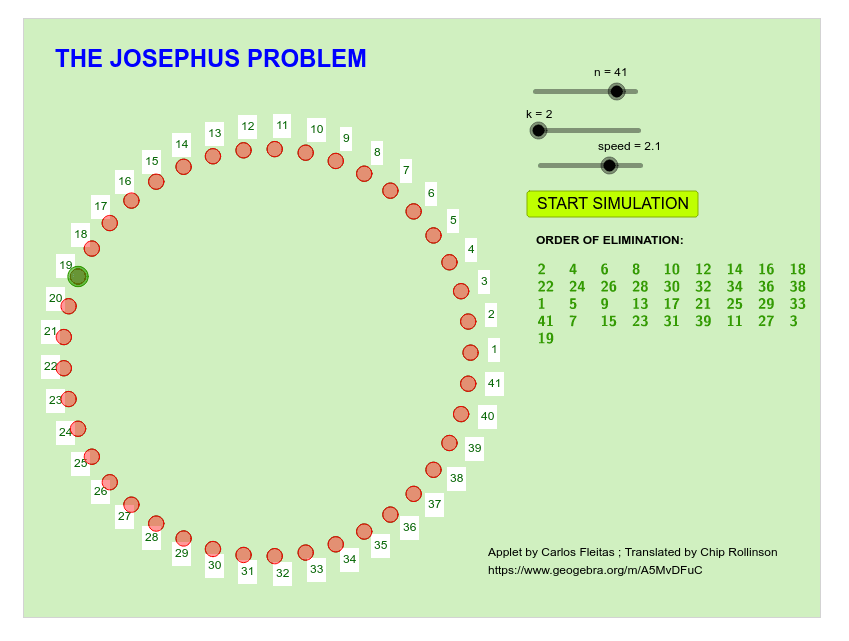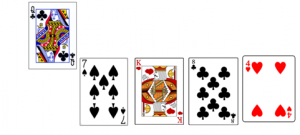
Cribbage
We played a simplified version of Cribbage, and looked at some of the interesting maths behind it.
Rules
Game for up to 8 players. Each person is dealt six cards. Players choose four cards to keep. Then one card is turned up in the centre of the table and counts as part of each player’s hand. Ace is considered the low card, and king high. The scoring is as follows:
Fifteens. Each card is assigned a value. Ace through 10 are the face value of the card, and jack, queen and king have value 10. Each combination that totals fifteen is awarded 2 points.
Pairs. Each pair of cards, ace through king, is awarded 2 points.
Runs. Each run of three or more cards is awarded the number of points equal to the length of the run – a run of three is worth 3 points, a run of four, 4 points, and a run of five, 5 points. In this instance runs are not counted in multiple ways. For example, A ,2, 3, 4, 5 is not counted as one run of five, two runs of four and three runs of three, but only as a single run of five.
The person with the highest score after four rounds is the winner.
Example hand (scores 16 points)

Questions to think about:
What do you think is the minimum and maximum scores possible?
Can you find the maximum hand?
Are there any impossible numbers inbetween?
Are some points totals more common than others? How could we know for sure?
See this page for some of the answers to these questions.
Here are the full version rules of Cribbage
